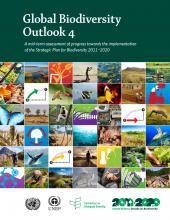Warming Seas in the Coral Triangle: Coral Reef Vulnerability and Management Implications
Bruno, John F.
,
Casey, Kenneth S.
,
McLeod, Elizabeth
,
Menviel, Laurie
,
Moffitt, Russell
,
Palmer, Michael J.
,
Salm, Rodney
,
Selig, Elizabeth R.
,
Timmermann, Axel
2010
The highest diversity coral reefs in the world, located in the Coral Triangle, are threatened by a variety of local stresses including pollution, overfishing, and destructive fishing in addition to climate change impacts, such as increasing sea surface temperatures (SSTs), and ocean acidification. As climate change impacts increase, coral reef vulnerability at the ecoregional scale will have an increasingly important influence on conservation management decisions. This project provides the first detailed assessment of past and future climatic stress, thermal variability, and anthropogenic impacts in the Coral Triangle at the ecoregional level, thus incorporating both local (eg. pollution, development, and overfishing) and global threats (increasing SSTs). The development of marine protected area (MPA) networks across the Coral Triangle is critical for the region to address these threats. Specific management recommendations are defined for MPA networks based on the levels of vulnerability to the therma stress may be priorities for establishment of MPA networks, wheras high vulnerability regions may require selection and design principles aimed at building resilience to climate change. The identification of climate and other human threats to coral reef systems and ecoregions can help conservation practitioners prioritize management responses to address these threats and identify gaps in MPA networks or other management mechanisms (eg. integrated coastal management).
